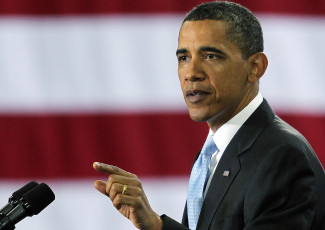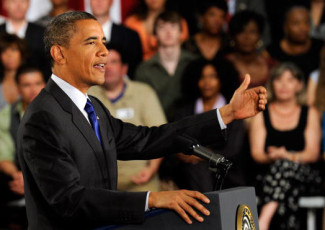Mich.: Pay for Tuition with Future Earnings?
By Corey Murray
April 21, 2014
Michigan lawmakers have introduced a bill that would allow students to attend a state community college for free. But there’s a catch: The students must contribute a percentage of their future earnings so that other students can enjoy the same benefit.
Programs that would offer community college students access to free tuition are all the rage. In the past few months, lawmakers in several states — Mississippi and Tennessee, to name two — have floated ambitious proposals that would essentially enable high school graduates to attend the first two years of community college for free. Last week, Tennessee became the first state to approve such a proposal. The $300 million program would begin in 2015.
But none of these is as complex or unique as the one unveiled recently in Michigan. Rather than simply pay for students to attend college with grant programs and other funding measures, many of which can hardly be guaranteed, state lawmakers have proposed a “pay-it-forward” model, in which participating students could attend college for free on one condition: They must contribute a percentage of their future earnings to the program (for up to 20 years) — so that other students would have the same opportunity.
That’s the scenario outlined by the Detroit Free Press. The article, which has been shared by more than 13,000 readers on social media since it was first published in late March, details a program in which community college students would agree to pay 2 percent of their future earnings (from the time they land a job) for five years for each year that they attend a college through the program. The money would go into a fund that would enable incoming college freshman to participate under the same parameters. And so on, and so on.
“The goal is to remove every financial barrier to high education,” Rep. David Knezek, a Democrat representing Dearborn Heights, told the paper. “This is a no-interest plan that allows you to pay back as you go and as you can afford it. It takes the monkey off the student’s back.”
Supporters of the bill believe they could feasibly launch a pilot program for up to 200 students with $2 million in state-provided seed money.
Administrators in Oregon are considering a similar approach, though the idea has only made it as far as a working committee in the state’s legislature.
A better way to pay?
The sudden interest in free tuition can largely be attributed to two factors: the need for more college graduates with advanced skill sets and the astronomical rise in college tuition, which has led to an increase in the number of students applying for, and subsequently defaulting on, student loans.
By tying payments to a percentage of future earnings, proponents of the pay-it-forward approach believe they can potentially take the sting out of those tough early years, when many graduates barely make enough to cover monthly rent and groceries, much less a staggering student loan payment.
“Spreading payments over 20 or 25 years, and linking them to earnings, ensures borrowers against hard times,” University of Michigan professor Susan Dynarski told the Free Press. “Payments flex up and down automatically, with borrowers paying less when their incomes dip and more when incomes rise.”
That’s the good news, explains Dynarski, who recently penned an op-ed about the program for Brookings. The bad news, at least for students who make a lot of money right out of college, is that they could end up paying more than their education is worth. Unlike traditional loan programs that feature a fixed dollar cap, the pay-it-forward approach ties students to a fixed percentage of salary over a predetermined number of years (number of payments), which means students who make more, pay more, and those who make less, pay less.
Whether such an arrangement would dissuade students with higher earning potential from participating remains to be seen. But Dynarski questions whether the program, in its current form, is sustainable.
“Economic theory — and history — shows that loans funded by a graduate tax won’t work because those expecting high earnings won’t participate,” she writes, asserting that it’s “a classic case of adverse selection — borrowers who would be subsidized participate while those who would subsidize stay away.”
Dynarski isn’t the only one to question the sustainability of radical new tuition proposals. While these and other budding free-tuition plans look to do right by the neediest students, higher education leaders say funding and political feasibility could well derail the programs before they get off the ground.
Want to learn more about what community college leaders and others are saying? Check out this article in Inside Higher Ed from February.
In all, more than 20 states have at least considered similar proposals, according to the Free Press. Could a pay-it-forward program work for students in your state?












